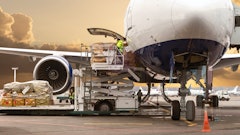The Mexican city of Tijuana recently started to build a 155-meter (500 feet) overpass that will join its airport with San Diego’s as the final element in an ambitious binational project 15 years in the making. In addition to the overpass, which will join Tijuana’s General Abelardo L. Rodríguez International Airport and San Diego International Airport, the construction plans include an area on the San Diego side with restaurants, shops and border control.
This project, financed almost entirely by private entities, began 15 years ago and is being carried out by Otay Tijuana Venture group on the U.S. side, which has among its investors tycoon Sam Zell, owner of the Los Angeles Times and the Chicago Tribune. On the Mexican side, the Grupo Aeroportuario del Pacífico (Pacific Airport Group, or GAP), which currently operates the Tijuana airport, is handling the construction. Both federal governments backed the project, which in its first stage will cost around $50 million, plus $34.5 million to buy land in the U.S. Around $15 million will be invested by GAP, according to a statement from the company.
Tijuana’s airport receives 4 million passengers every year, half of whom originate or are headed to the U.S. Many American travelers use the Tijuana airport to fly to and from Asia, since it has more connections at cheaper fares. The overpass will facilitate transportation, as the only current road between both cities is congested with traffic jams between the U.S. and Mexico that the San Diego Association of Governments estimates leads to a loss of $7 billion a year.
For Tijuana, the overpass means an increase in passengers and the possibility of more routes. “TIJ is the second domestic airport in Mexico, after Mexico City, and this project will make it more attractive to international airlines, particularly Asian,” said Miguel Aliaga, one of the directors of GAP. “Tijuana will be the best-connected airport in Mexico."
The binational airport is the ultimate example of how the Tijuana-San Diego partnership could become a transnational economic engine. Once the project is finished in late 2014, TIJ will be the first multinational airport on the American continent, and the third in the world, after the two shared by France and Switzerland and Basel-Mulhouse and Geneva. To read more, click HERE.
















